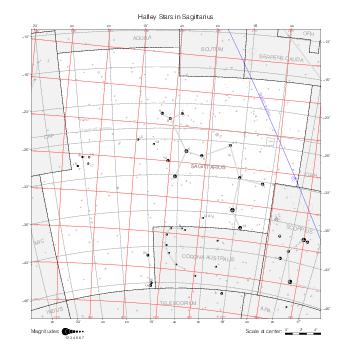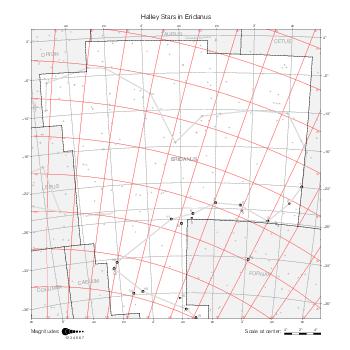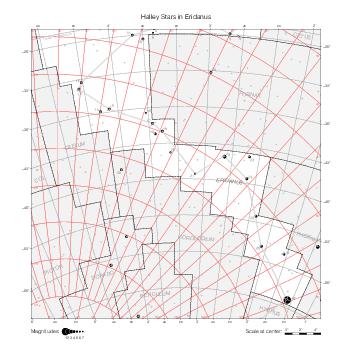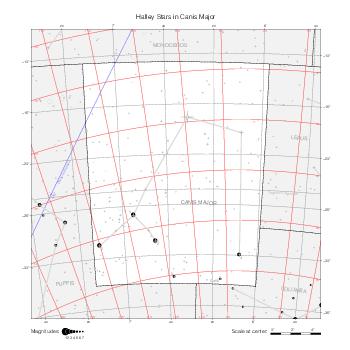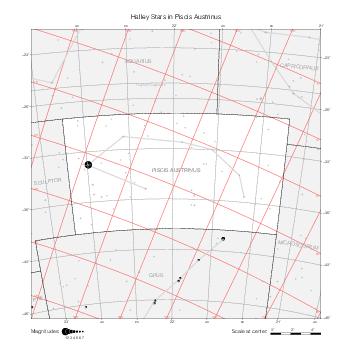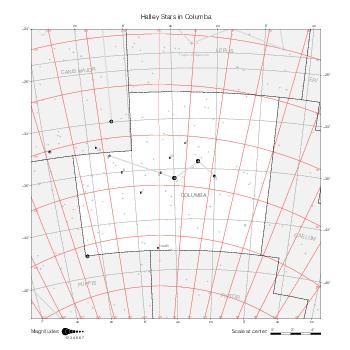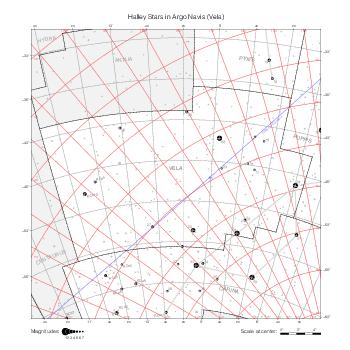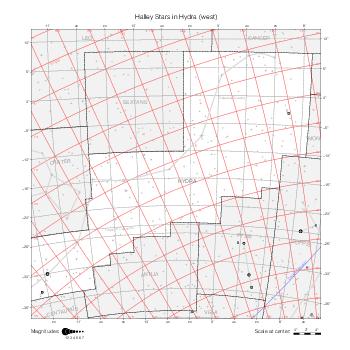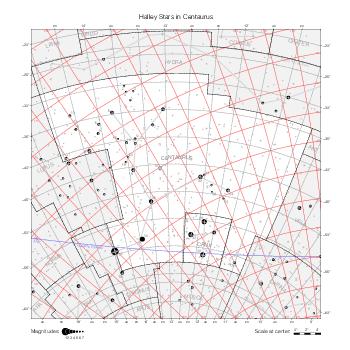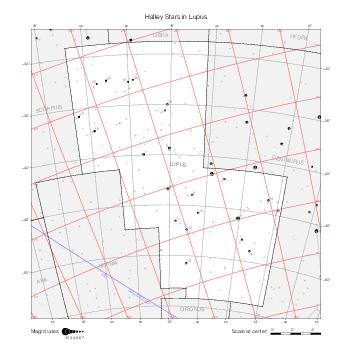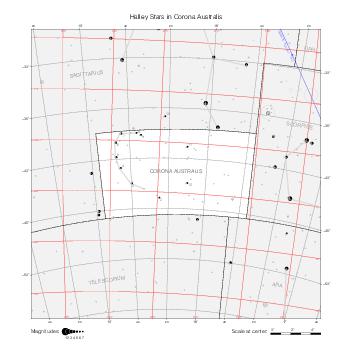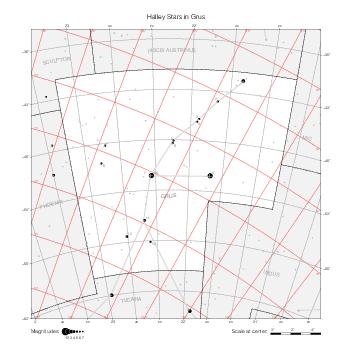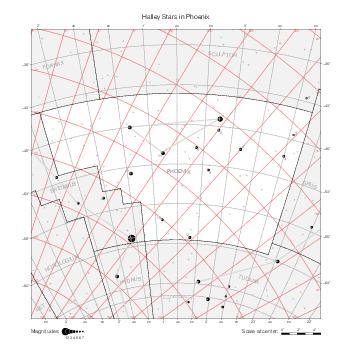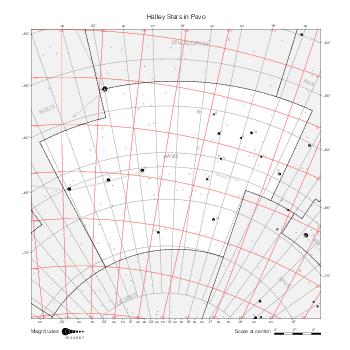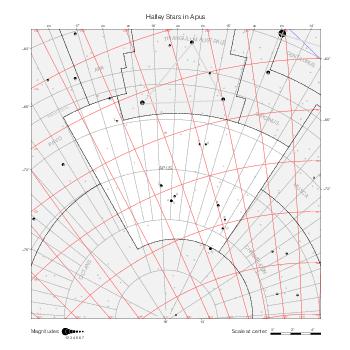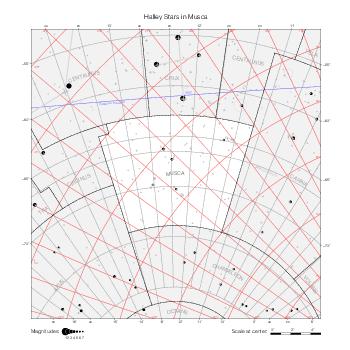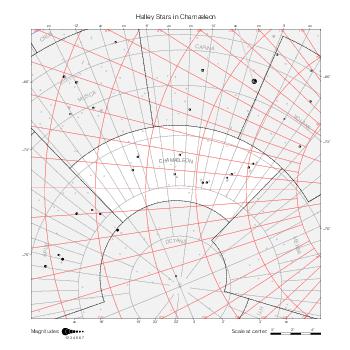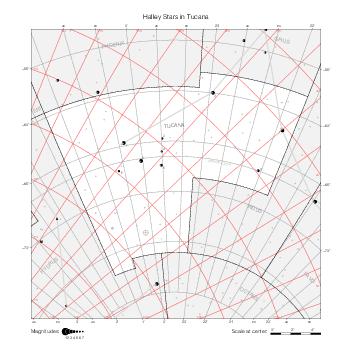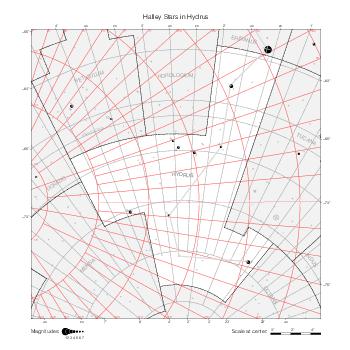Description
The star maps below cover Halley's catalog in the equatorial and ecliptic coordinate systems corresponding to the catalog's equinox January 1, 1678 of the Julian calendar (Ad Annum Incarnationis 1677 completum, according to the catalog heading), or
| Julian Day | 2,333,948 |
| Besselian epoch | B1678.0313… |
| Julian epoch | J1678.0369… |
The ecliptic coordinate system uses the obliquity value computed for that epoch according to the IAU 2006 precession model, close to 23°28'52".
Catalog entries are represented according to the ecliptic positions and magnitudes given in the catalog. Their representation and labeling follow the conventions described on the historical catalogs page. Magnitudes given as a range are 'interpolated by half', so that the range 3-4, for example, corresponds to the magnitude value 3.5.
Halley's catalog features three nebulous objects:
| YNO | YID | Modern designation | |
|---|---|---|---|
| 20 | Sco | 20 | NGC 6231 |
| 29 | Sco | 29 | NGC 6475, M 7, Ptolemy cluster |
| 180 | Cen | 21 | NGC 5139, ω Cen |
Maps by constellation
The following maps cover the catalog, one constellation at a time. They are enumerated in the same order as the constellations in Halley's catalog. Robur Carolinum doesn't have its own map but is entirely visible on the Carina map.
General map
The following map gives a global view of Halley's catalog. It covers the whole catalog except its northernmost star Hya 5.
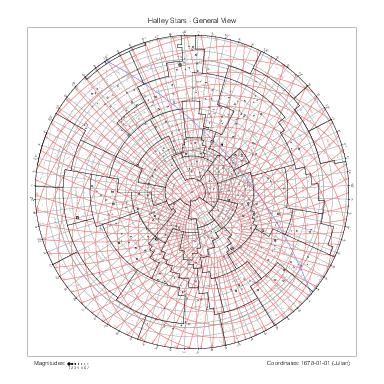
|




